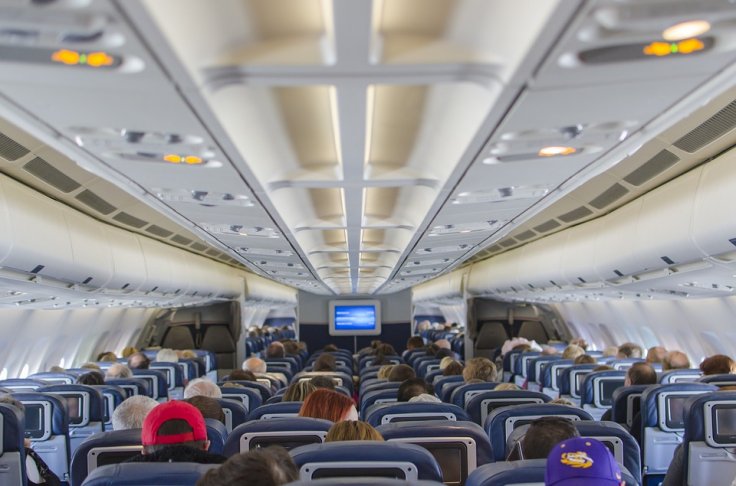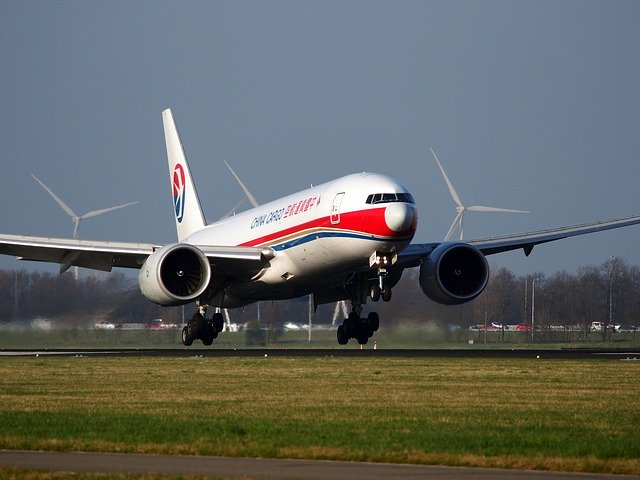As airlines resume operations, many people are boarding the flights assuming that the social distancing inside the aircraft will keep them safe from catching novel Coronavirus. But these two latest studies showed the reality of virus infection risk inside the flights.
A woman and her sister traveled across Europe and visited Milan and Paris before heading to London. After leaving London the woman developed a sore throat and had a cough when she boarded a flight to her native, Vietnam. But no one noticed these symptoms.
As per a report published on Friday, September 18 when she landed in Hanoi, 15 other people on the same flight got infected by the virus. This showed how Coronavirus can spread inside flights and that providing extra space inside the aircraft will not fully protect people.
In another case, Boston to Hong Kong flight passengers appears to have spread the virus inside the aircraft, infecting two flight attendants. What is common in these two cases is, both incidents took place in early pandemic time and both involved long flights before the airlines started requiring face masks.

Understanding of Coronavirus Spread
A team from Vietnam tracked down a cluster of cases that have links to the flight which took off from London and landed in Hanoi on March 2. Nguyen Cong Khanh of the National Institute of Hygiene and Epidemiology in Hanoi and colleagues wrote in the journal Emerging Infectious Diseases that a 27-year-old woman from Vietnam, whom they identified as the "probable index case," had been based in London since early February this year.
According to the researchers, on February 22, "case 1 and her sister returned to Milan, Italy, and subsequently traveled to Paris, France, for the yearly Fashion Week before returning back to London on February 25." By that time novel Coronavirus began to spread fast in Italy but there were very few cases in Britain.
The researchers noted that the woman boarded a flight to Hanoi on March 1 and she was seated in Business Class, even though she was experiencing two Coronavirus symptoms throughout her journey and landed in Vietnam the next day. Three days later when she went to a hospital, the woman was tested positive for the Coronavirus.
After her reports came, health officers tracked down 217 passengers and crew who had been on the flight with her. Later it was found that 12 other co-passengers, two economy class passengers, and one crew member were also infected. As per the investigators, there is no other way these people could have to get infected inside the flight apart from exposure to a sick patient—via aerosol or droplet.
The team of researchers said that the risk for on-board transmission of novel Coronavirus during long flights is real and "has the potential to cause COVID-19 clusters of substantial size, even in business class--like settings with spacious seating arrangements well beyond the established distance used to define close contact on airplanes."
According to them traveling via flights would be only safe if the authorities follow specific guidelines—better on-board infection prevention measures and arrival screening procedures.
In terms of the Boston to Hong Kong flight case, the couple showed Coronavirus symptoms after their flight landed and then were diagnosed with the virus. Later, with the help of contact tracing, it was found that two flight attendants were also got infected. In a report, Deborah Watson-Jones of the London School of Hygiene & Tropical Medicine and colleagues wrote that the only place where the passengers were close proximity for a long-time was inside the flight.
The team of experts also said that "genetic sequencing linked all four cases. The near full-length viral genomes from all four patients were 100 percent identical."

Post-Pandemic Plan
Airlines are now looking at solutions including redesigning the cabin so that it won't compromise passengers' health during the pandemic. While many airlines nudged the idea of infection in a flight, stating that flights are equipped with HEPA filters, there have been breakouts.
So, many airline companies have come up with answers that include barriers between seats, ultra-violet light cleaning, and change in seat fabric. The CEO of Recaro Aircraft Seating, an aircraft seat manufacturer, also said, "Even if airlines aren't going to buy new planes, they might go for new cabins that are more comfortable or adapted to COVID."
So next time when people will board a flight, they may notice some massive changes which would become a 'new norm', the way wearing masks is now.









